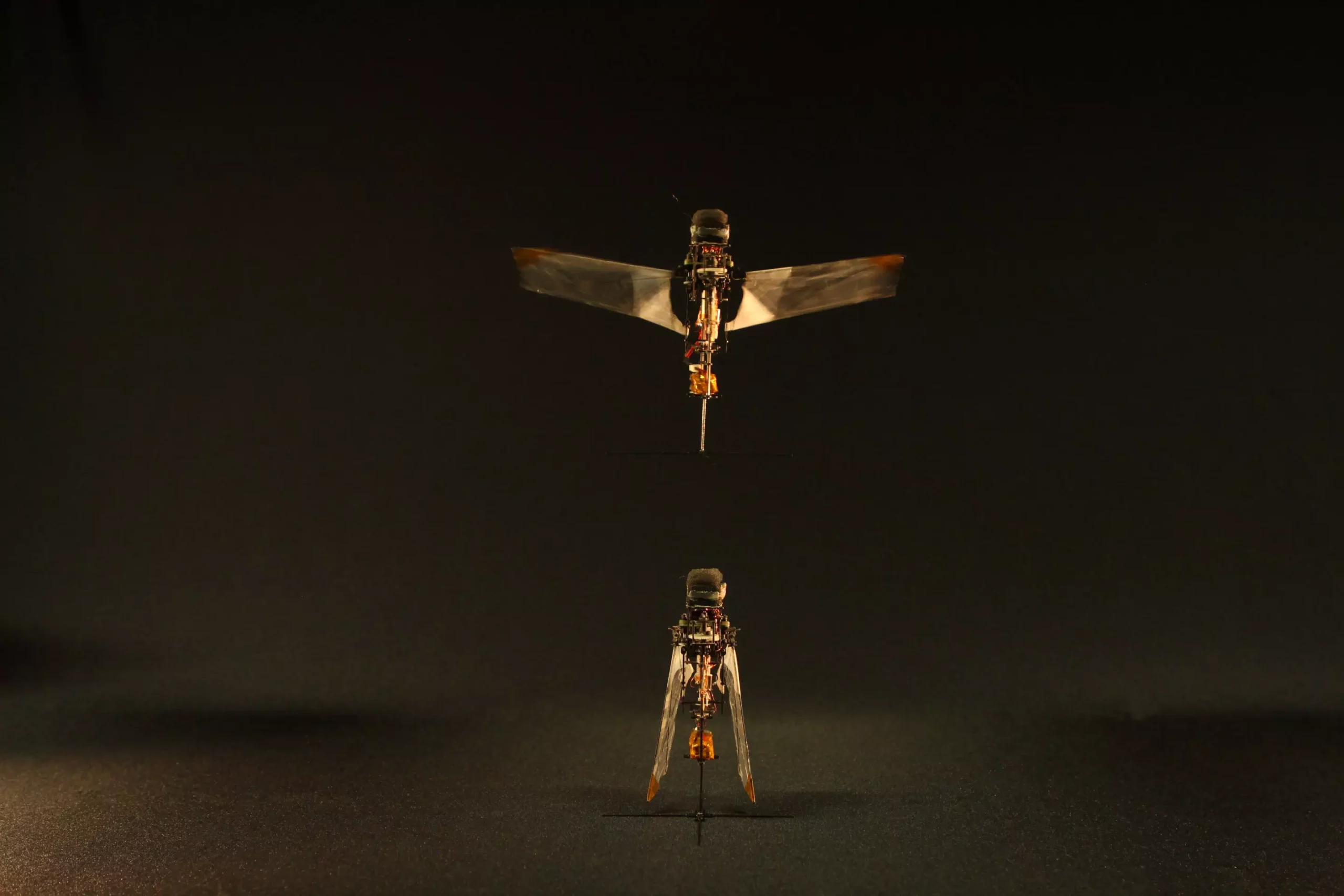The wing dynamics of flying animal species have long been a source of inspiration for the development of flying robotic systems. While birds and bats flap their wings using pectoral and wing muscles, the processes underlying the wing movements of insects, such as rhinoceros beetles, have remained largely unknown. Researchers at Ecole Polytechnique Fédérale de Lausanne (EPFL, Switzerland) and Konkuk University (South Korea) set out to investigate how herbivorous beetles deploy and retract their wings. Their findings, published in a paper in Nature, led to the creation of a new flapping microrobot that can passively deploy and retract its wings, eliminating the need for extensive actuators.
The hindwings of beetles, including rhinoceros beetles, are like foldable origami structures. They can be neatly folded and stowed under the elytra while the insects are at rest, and then passively deployed when they take flight. Previous studies have focused on replicating the dynamics of beetle wings in robots using origami-like structures but have overlooked movements at the base of the hindwings. The research by Phan and his team delved deeper into the wing deployment mechanisms of beetles, uncovering passive strategies that do not rely on muscle movements.
Passive Mechanisms for Wing Deployment
Through observations of rhinoceros beetles, Phan discovered that these insects employ a passive mechanism to deploy their hindwings for flight. By leveraging their elytra and flapping forces, the beetles can passively deploy their wings when taking off and retract them when landing. These actions do not require thoracic muscles, unlike the flight of birds and bats. The researchers translated this passive mechanism into a flapping microrobot, demonstrating the ability to fold its wings along its body when at rest and passively deploy them for takeoff and stable flight.
The insights gained from studying beetle wing mechanisms have practical applications for search and rescue missions in confined spaces. The flapping microrobot developed by Phan and his team can navigate narrow spaces, land or perch on surfaces, and switch between flight and crawling modes. This versatility makes it a valuable tool for exploring collapsed buildings or forests where conventional drones may not be suitable. The microrobot’s low-flapping frequency also makes it safe and user-friendly, suitable for educational purposes or engineering research.
Preliminary tests of the flapping microrobot have yielded promising results, demonstrating its potential for various real-world scenarios. Future studies could further enhance the design and test it in different environments to validate its effectiveness. Exploring whether other insects utilize similar passive strategies for wing deployment could provide further insights into the biomechanics of insect flight. The development of flapping microrobots based on beetle wing mechanisms opens up new possibilities for robotics, biology, and education.


Leave a Reply